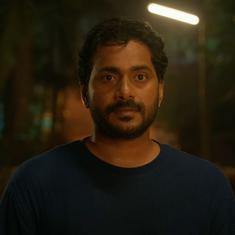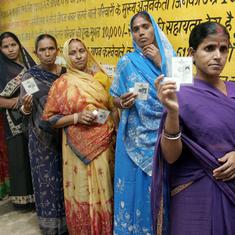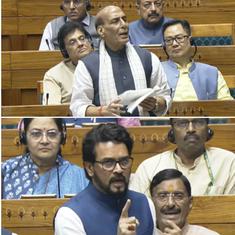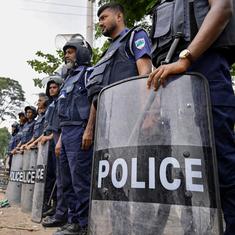The Maharashtra government has ambitious plans for Palghar district. Seven large projects such as a bullet train that will pass through to Gujarat and the Vadhavan Port are aimed at transforming Palghar into another Mumbai to decongest the crowded metropolis to the south.
But the reality of this Adivasi-dominated district is starkly different from India’s commercial capital. Palghar, like other Adivasi-dominated districts in the wealthy state of Maharashtra, suffers from malnutrition, a dearth of livelihoods, depletion of forests and, crucially, maternal and infant deaths.
In April, Chief Minister Devendra Fadnavis announced an upgrade in health services in Maharashtra that would ensure healthcare access for communities within 5 km of where they live.
But the same month, health activists presented ground-level research on public healthcare and access in the district at the ninth Maharashtra Mahika Arogya Hakk Parishad in Palgarh’s Chahade village.
They highlighted major gaps in Palghar’s medical infrastructure to reiterate that extending equal healthcare access, especially for poor and marginalised residents, will be a formidable challenge for the state government.
Participants at the meeting highlighted the challenges of inadequate basic facilities and insufficient technicians and doctors in rural areas. They also emphasised the toll this takes on the lives of women and workers in the informal sector.
So underdeveloped is the health infrastructure in Palgarh that residents are compelled to visit private hospitals or travel north to Gujarat, with which it shares a boundary. For many, the nearest public hospital is in Silvassa, in the Union Territory of Dadra and Nagar Haveli. But this facility is often hard-pressed to accept patients from Maharashtra.
Fadnavis’s health plan comes at a time when the use of public health facilities in Maharashtra is lower than the national average.
Women pay the price
According to the 2011 census, Palghar district had a population of nearly 30 lakh, of which 37.39% is Adivasi. In 2014, Palghar – which sprawls out over 5,344 square km – was carved out from Thane district to improve its administration.
Despite this, the district’s health services are still underdeveloped. This is especially evident from the toll on pregnant women. In 2024, there were 14 maternal deaths in the district, a health official said. They were investigated by the statutory Maternal Deaths Review Committee to identify shortcomings in the medical system.
The health official said that Palghar has nine rural hospitals and three subdistrict hospitals but no tertiary hospital – which is equipped for specialist medical treatment and care. The district lacks an obstetrics ICU, which is crucial for emergencies.
The system is understaffed. There are no technicians or specialist doctors, said the official. There is also no government radiologist in the district. It has only two permanent gynaecologists and seven on call on a need basis. This absence of staff is especially acute in the four remote talukas of Mokhada, Wada, Jawhar, Vikramgad, said the health official.
Only in November, a pregnant woman from Sarni village died in an ambulance without oxygen. She had come to the rural hospital in Kasa but was sent on to Silvassa.
Women at the Maharashtra Mahika Arogya Hakk Parishad said the government promotes hospital deliveries but healthcare staff are indifferent and lacking in empathy.
Women experiencing distressful pregnancies were shunted from one healthcare facility to another while some died since they were not attended to on time, said advocate Meena Dhodade from the Bhoomi Sena.
Dhodade and her team investigated 12 of the 14 maternal deaths in Palghar taluka – an administrative unit of the district – between April 2023 to December 2024. They found that a young woman in her ninth month was turned away from the Manor government hospital since there were no proper facilities there. She was redirected to Silvassa but she died there after she was not attended to on time.
Another woman who could not access medical treatment at Safale died en route to the Palghar rural hospital. A private hospital, too, recorded the death of a pregnant woman.
In another instance, a woman who travelled to Valsad in neighbouring Gujarat for her delivery did not make it on time. Some women died after giving birth and in another case, a woman died of excessive bleeding after her delivery.
Dhodade said official records underestimated maternal deaths in Palghar taluka during the same period.She and her team investigated 12 incidents and found that two deaths were not registered. The women were between 20 to 24 years. Some suffered from anaemia.
According to the fifth round of the National Family Health Survey, 2019-’21, 54% of women in Maharashtra are anaemic. Anaemia is particularly high among rural women, young women between the ages of 15-19 and women from the Scheduled Tribes.
Madhu Dhodi, an activist of an organisation called the Kashtakari Sanghatna, said that of 28 women interviewed for her study in three villages, 22 who went to government hospitals were sent to other health facilities without any explanation. Women also said that there were often no doctors and that their babies had been delivered by nurses.
There have been other healthcare violations as well.
A young participant at the parishad said that two years after she underwent a caesarean procedure, she found a wire dangling from her body. She pulled it out, thinking it was a leftover thread from her surgery. She told a health worker, who took her to a nearby doctor. It turned out to be the remnants of copper T, a contraceptive, which had been inserted inside her without her knowledge.
Reliance on midwives
Some women said that after the delivery, they could not contact their families and felt isolated. Dhodi said the hospitals and primary health centres were also filthy, with no clean linen or even warm water. She pointed out that at times, there was no surgical thread available for post-surgery stitching.
Women at the parishad also said they preferred midwives as they felt safer with them. The Warli Adivasi community has relied on “soyeen”, or midwives, for generations.
Adivasi Ekta Parishad activist Kirti Vartha profiled 10 “soyeen” and found that some of them had delivered three generations of children. With the customary midwife practices vanishing, she said the government must provide training and support to health workers, especially in the absence of qualified doctors in the area.
She also said midwives should accompany pregnant women to hospitals or health centres. At times even the medical staff has relied on the knowledge and experience of the soyeens, she said.
Dr Nilangi Sardeshpande, project coordinator for Society for Health Alternatives or SAHAJ said the Centre had issued guidelines for midwife services in India and that one of the training centres is in Telangana.
Maharashtra’s maternal mortality rate is 33, far below the national average of 97. But in places like in Palghar, there are likely to be huge variations in ground-level data. The state has achieved the UN Sustainable Development Goal of bringing down maternal mortality rates but to reduce it further, the focus must be on marginalised communities.
On June 6, the Palghar district administration announced its healthcare preparations for the monsoon, focusing on maternal and child health. The plans include establishing contact with expecting or breastfeeding mothers in 82 villages and 137 hamlets with no road connectivity.
Exposed to the weather
Another challenge faced by women in Palgarh is the extreme weather, Since many women have jobs in the informal or unorganised sector, they often work outdoors, bearing the brunt of extreme weather – like heatwaves in summer.
Pradnya Gawad of the Rashtra Seva Dal studied women who sold vegetables on the street and fisherwomen. Many of them walked to the market, often carrying 15 kg of produce. There were no facilities for shade, water and toilets in the vicinity.
The women said they suffered from body aches, high blood pressure and that they couldn’t seek medical advice due to their work timings. It was worse during menstruation with no clean toilets or shady spots to rest.
The lives of brick kiln workers who migrate annually within the district were equally dire, illustrating the challenge of extending health services to marginalised residents.
Snehalata Gamre of the nonprofit Aarohan said that according to the study she carried out, the workers live in makeshift shanties with no water or power, and no access to food rations. They are paid a pittance of Rs 800 to Rs 1,000 per week per family, despite working for nearly 15 hours a day. Many complained of body ache, burning eyes and urinary tract infections. Gamre suggested establishing mobile dispensaries and providing food rations.
Meena Menon is a freelance journalist and a postdoctoral visiting fellow at the Leeds Arts and Humanities Research Institute, University of Leeds, UK.










